MATTERS OF OBSESSION
Boys will be boys: The alchemy of an all-male ballet
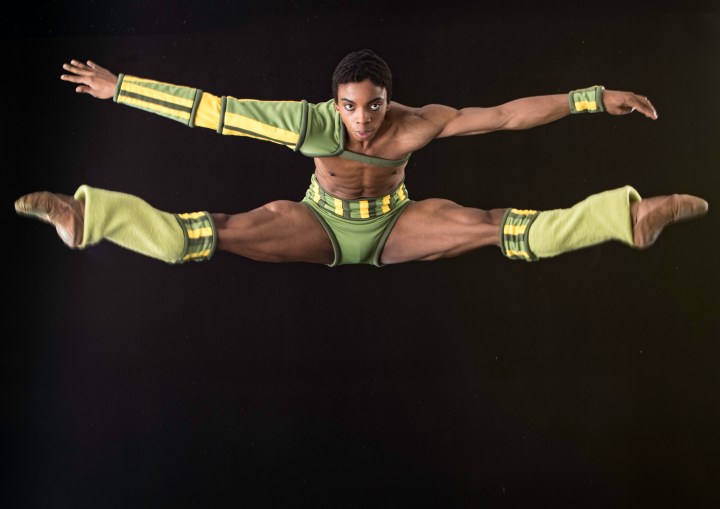
Works by three acclaimed male choreographers have been assembled for Cape Town City Ballet’s new programme, Alchemy – Three Dances. Among them is Troy Game, a beloved contemporary classic choreographed by Robert North in 1974 and being staged with South African dancers by Julian Moss.
Palpitations. My heart thudding in my chest as I witness eight exquisite dancers whose fine-tuned bodies twist and weave, thrust and twirl, jump, fall, fly, and – I later discover – ache.
My own body, meanwhile, is rocking rhythmically to a furious drum beat, a Brazilian-flavoured score belted out through the speakers, filling the vast white-box studio with surging energy. What’s unfolding is exhilarating. Not only because it hints at the return to stages of physical performance after a long pause, but because of the dancers’ robustness and vigour, their almost shocking immersion in the moment.
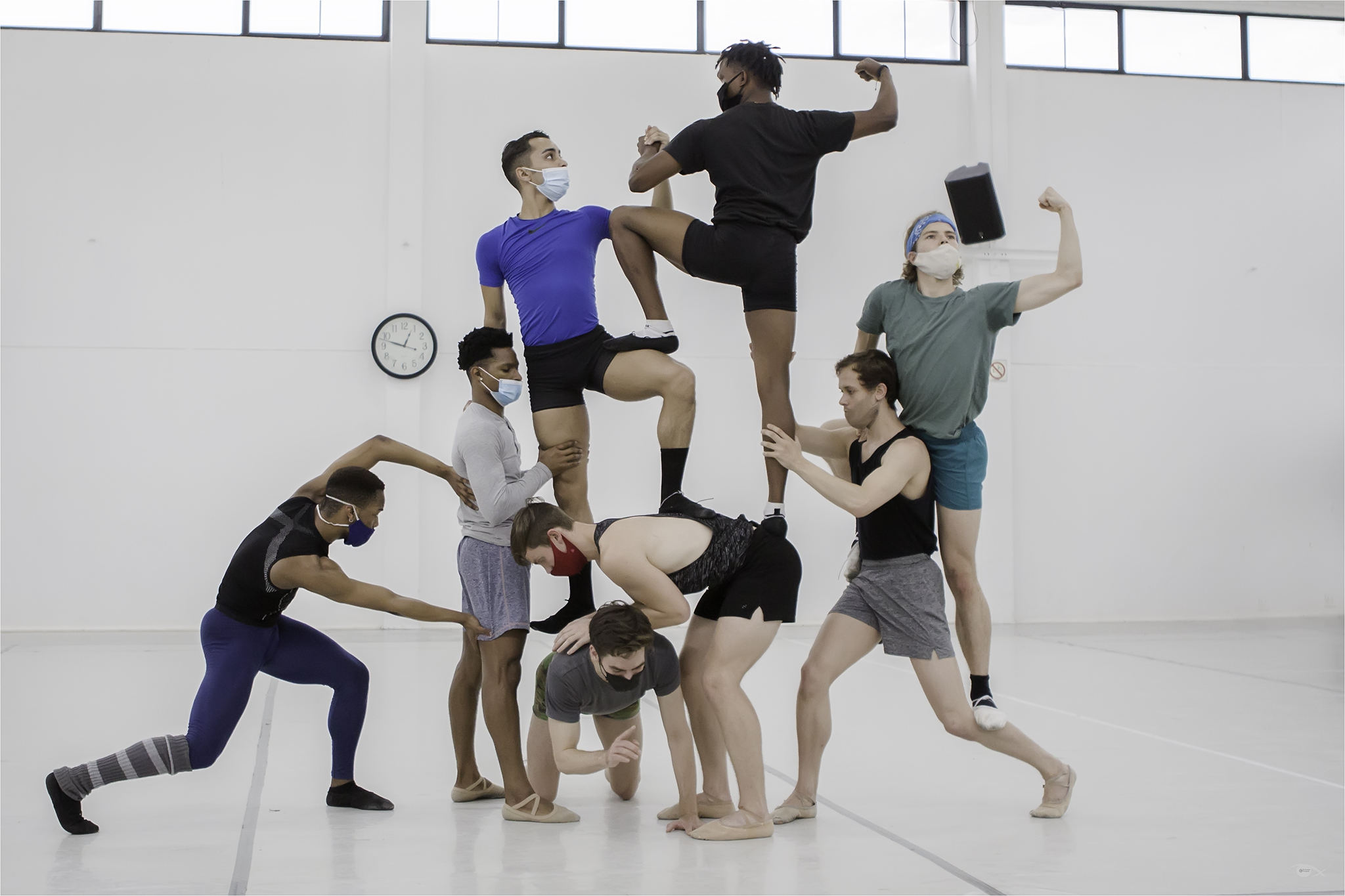
CTCB in rehearsal for Troy Game. Image: Danie Coetzee
They are playing at being jocks, putting on macho postures – strutting, preening, cock-walking, play-fighting. They are soldiers readying themselves for battle, boxers challenging one another to a bout. Or maybe they’re boys pretending to be warriors, teasing and bullying, enacting butch stereotypes.
And then – suddenly – the martial gestures evolve into graceful dance movements, steely rigidity giving way to gyrating hips and wild-flailing arms. It’s a ceaseless back-and-forth between manly display and balletic grace.
There are no massive muscles, no bulging biceps nor beefy necks, none of the giveaway signs you’d associate with gym boytjies. Instead, the dancers are in their tights and short shorts, loose T-shirts hanging over pert butts, ballet shoes smoothing the tips of flawlessly toned legs.
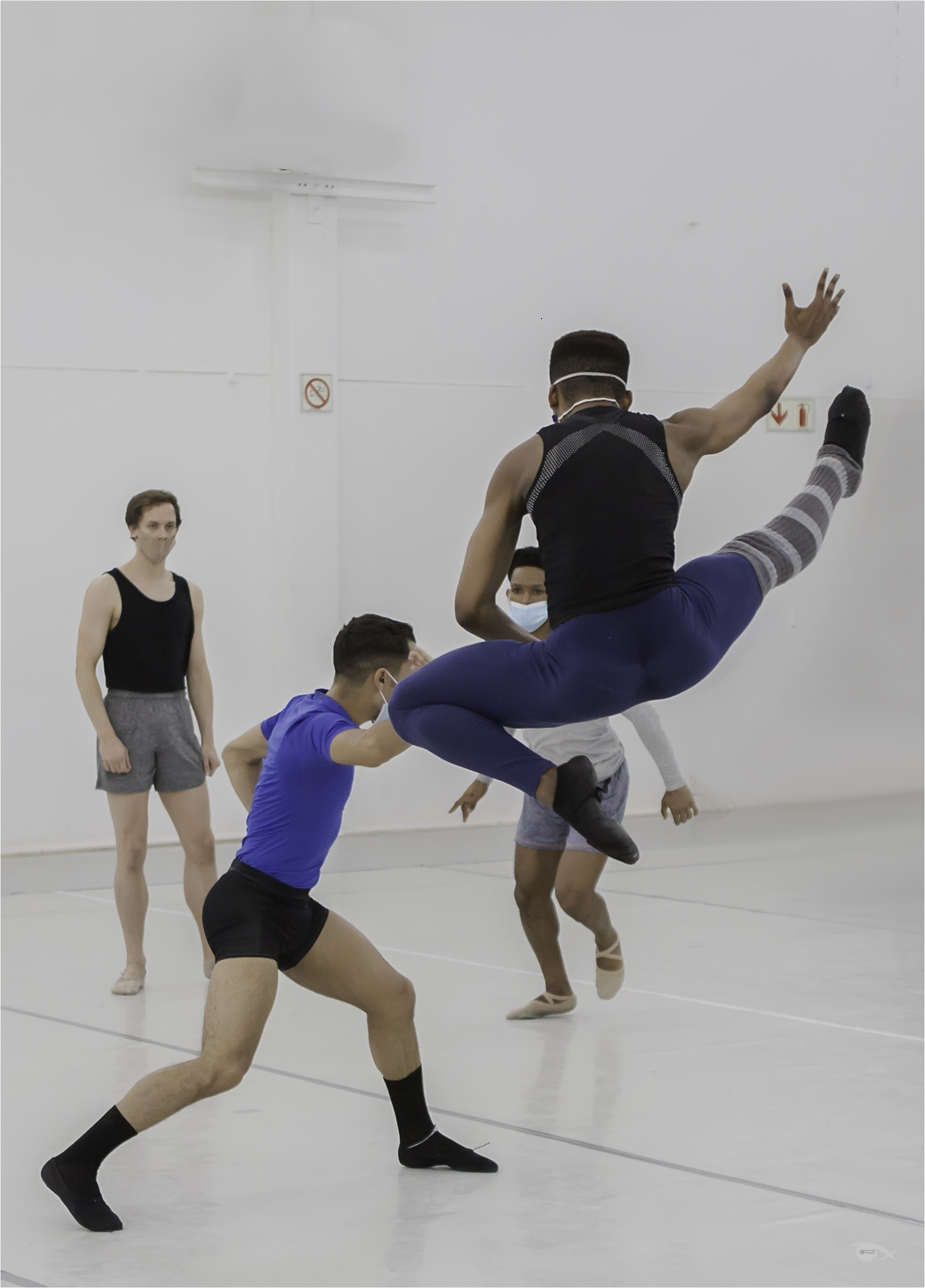
CTCB in rehearsal for Troy Game. Image: Danie Coetzee
These lower appendages, though, are like steel coated in porcelain, thighs and quadriceps rippled with evidence of years of training, calves shaped by relentless classes, bodies stretched and toned, supple and pliable thanks to regimented rehearsals. So much talent crammed into each individual body, such poise and discipline… And then a twinkle in an eye, and mocking laughter as the seriousness of athletic solos and group combat transitions into overt goofiness. They’re not so much fighting as poking fun at the entire project of hyper-masculinity, executing a montage of moving friezes, their pace alternating between high-energy action and trancelike slow-motion. One instant I’m seeing propulsive gymnastics, the next they are human sculptures.
The studio is in a tucked-away part of Rondebosch, at the HQ of Cape Town City Ballet, where the all-male cast is being put through its paces in preparation for the opening of Troy Game, a 25-minute contemporary classic by the legendary British choreographer Robert North, ballet director of Germany’s Theater Krefeld und Mönchengladbach and creator of more than 90 ballets.
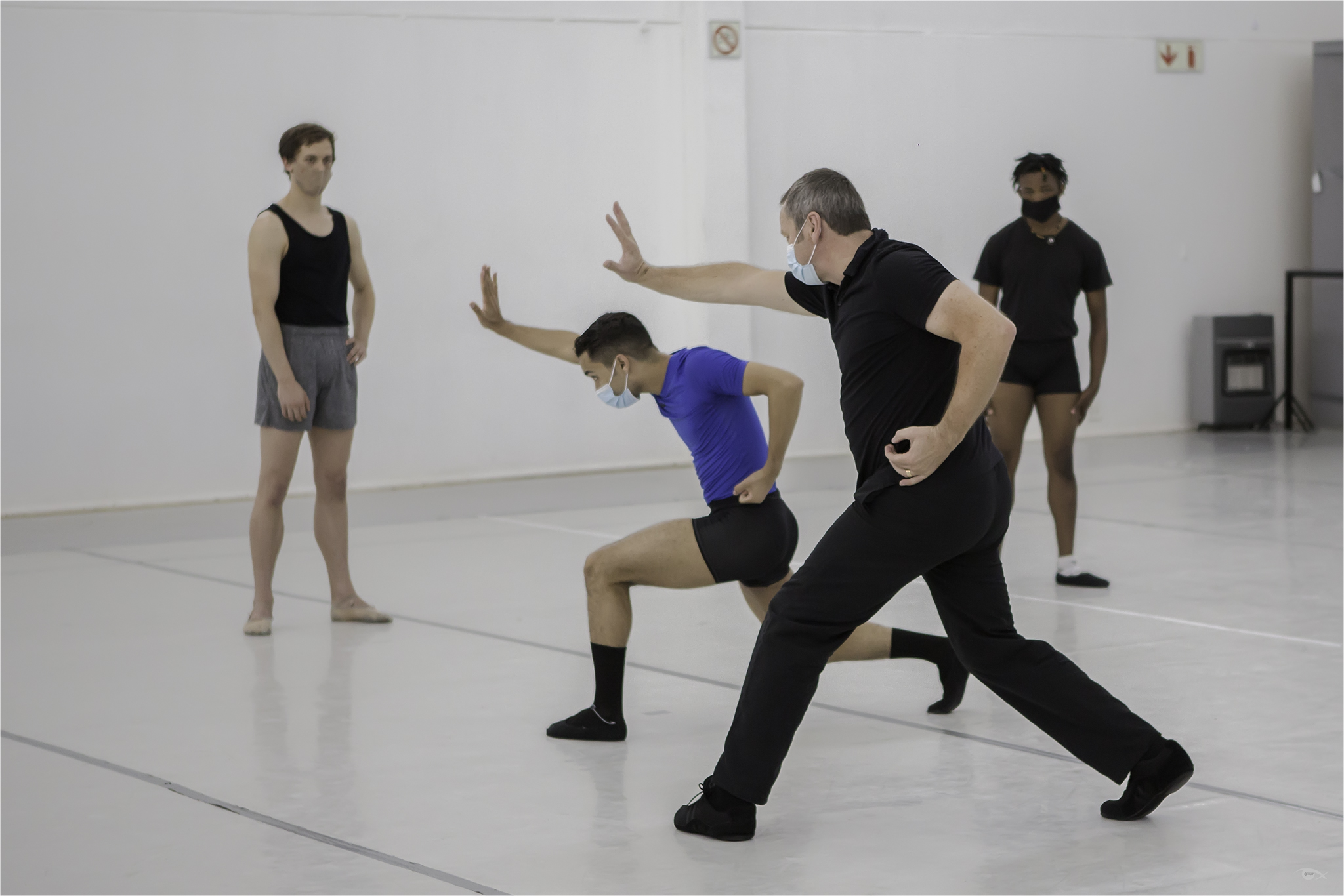
Julian Moss in rehearsal with CTCB for Troy Game. Image: Danie Coetzee
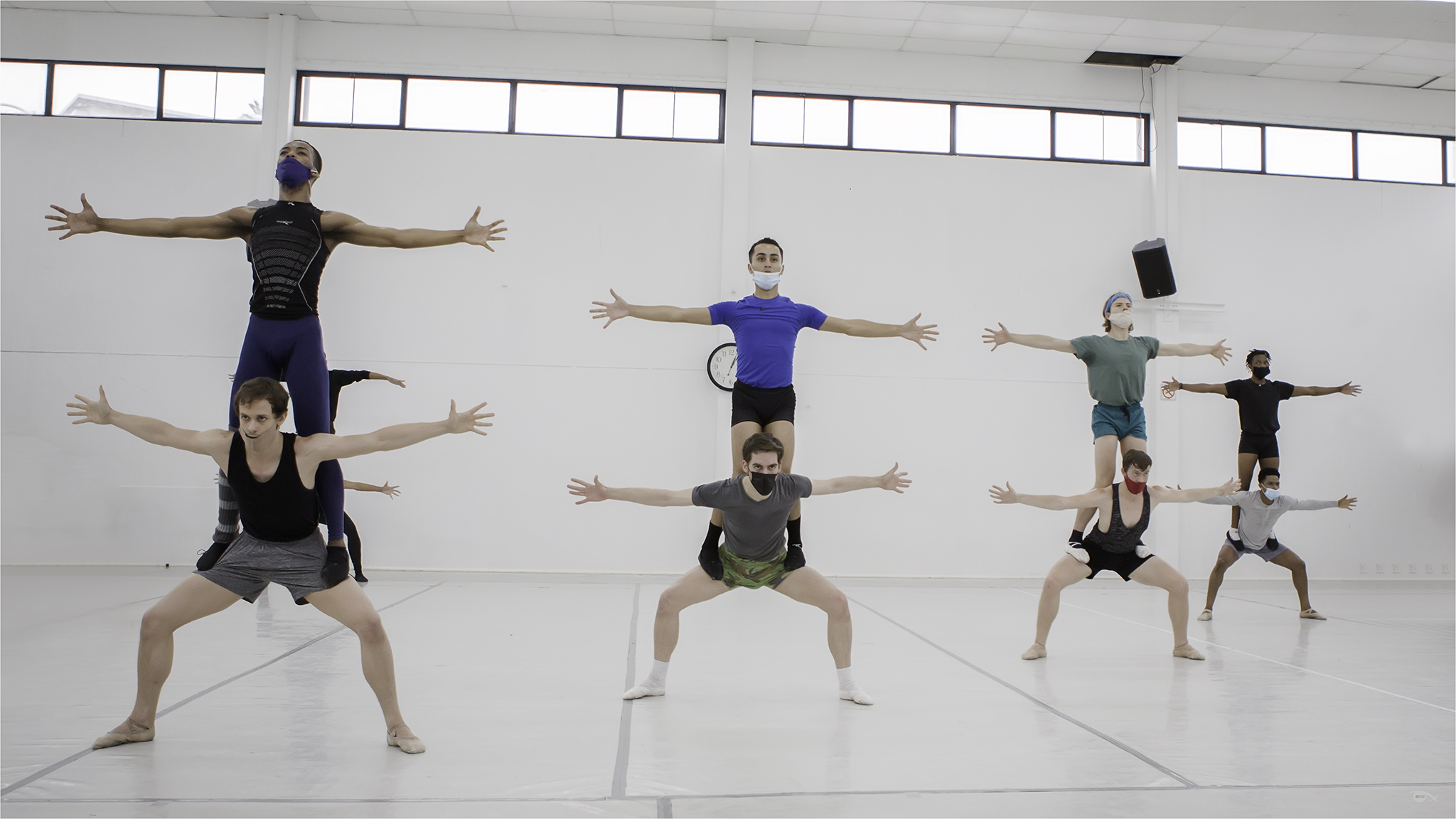
CTCB in rehearsal for Troy Game. Image: Danie Coetzee
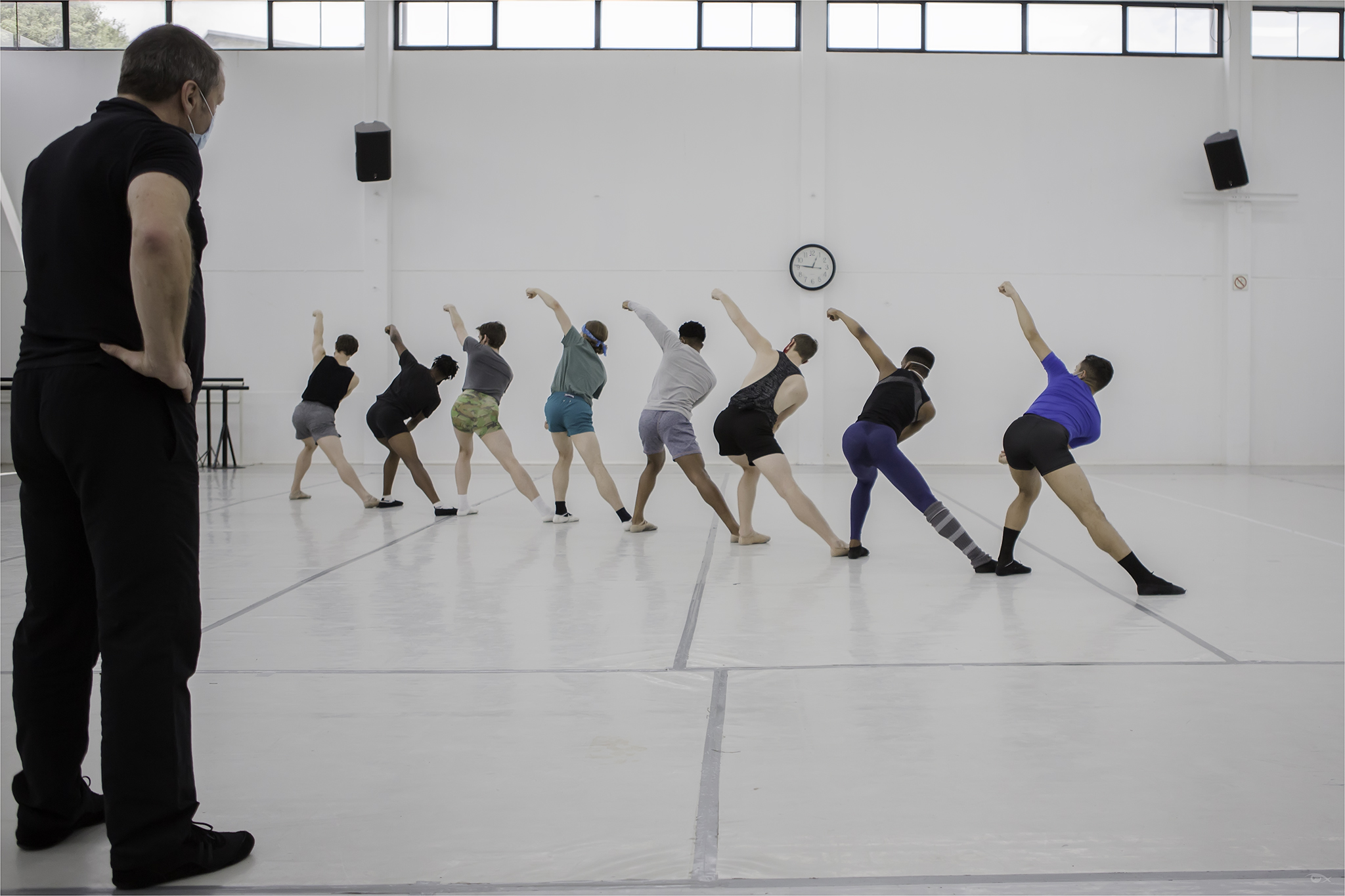
Julian Moss in rehearsal with CTCB for Troy Game. Image: Danie Coetzee
Inspired as much by the war games of ancient Greece as by such martial arts as aikido and capoeira, Troy Game has been hailed as much for the purity of the dancing as it has for its inventiveness and its wit. While it brims with testosterone-fuelled sexiness, it dares to laugh at macho stereotypes. Having been performed countless times around the world, it remains a perennial crowd-pleaser, not because it is simple, but because it demands everything of the performers.
Among dancers, it’s known for the degree of punishment meted out. It is 25 minutes of proverbial jumping; watching some sequences you can’t help but hold your breath in anticipation of someone cramping up, breaking a toe, falling hard, colliding, maybe collapsing. Their commitment is astonishing, though, the intensity almost surreal, their endurance fuelled by that energising, almost primordial music.
Also driving them – hard – is Essex-born-and-raised Julian Moss, himself a veteran of Troy Game who has danced it “hundreds of times” and has, since 1988, been assisting North by setting the piece with different dance companies around the world. In the early 1990s, he was in South Africa to stage it with a Durban dance company; Cape Town is his third staging of the work this year – the previous two were in Poland and in Kosovo. “I’ve never taken it anywhere where people don’t like it,” he says. “Audiences love it.”
And while he’s lost count of the number of times he’s staged it, Moss says it never gets old. “Firstly, it’s the music,” he says. “I think if you tire of music like that, there’s something wrong with your soul.”
The work is also close to Moss’s heart; he says it’s what triggered his desire to be a dancer.
Even if it’s two steps forward and one step back, if you have five dancers in a row all doing it together, they’ll each have their own special way of doing it – a personal way of interpreting it, a unique way of being seen.
“Before seeing it, I never wanted to be a dancer. I wanted to be an actor. At drama school, I had to do dance classes. In 1975, when I was 15, my dance teacher drove us 20 miles to a nearby town where the London Contemporary Dance Theatre was performing Troy Game. I thought it was amazing. I don’t know what shifted in me, but it was just like all the fragments which were disassembled came together – like having an internal blindfold taken off. The penny just dropped.”
Another thing that keeps the piece fresh for Moss is that every company he works with is of course composed of different dancers, each with their own uniquenesses. “Although all the steps remain the same, the way they’re done is automatically different because they are eight unique individuals. Even if it’s two steps forward and one step back, if you have five dancers in a row all doing it together, they’ll each have their own special way of doing it – a personal way of interpreting it, a unique way of being seen. That’s really what keeps me fed.”
He says that within the Cape Town company those degrees of individuality are somehow enhanced. “Within many ballet companies, because of the nature of the art form, there’s more parity between each individual dancer. What’s interesting here is that there’s much more disparity between each of the dancers – so each of their individual characteristics are heightened. Because of the nature of this company – with dancers coming from all kinds of different backgrounds, and having diverse roots – those differences seem to be exacerbated. I like that. It gives me – as a stager of Robert North’s work – more to play with.”
Troy Game is itself a celebration of diversity, a coming together of disparate styles and influences. Moss explains that what adds to the complexity of the piece is it’s interweaving of multiple dance styles, something that’s explained by North’s own eclectic dance background: He was trained at London’s Royal Ballet School, danced with Martha Graham, and also worked with the American Jazz dancer Matt Mattox.
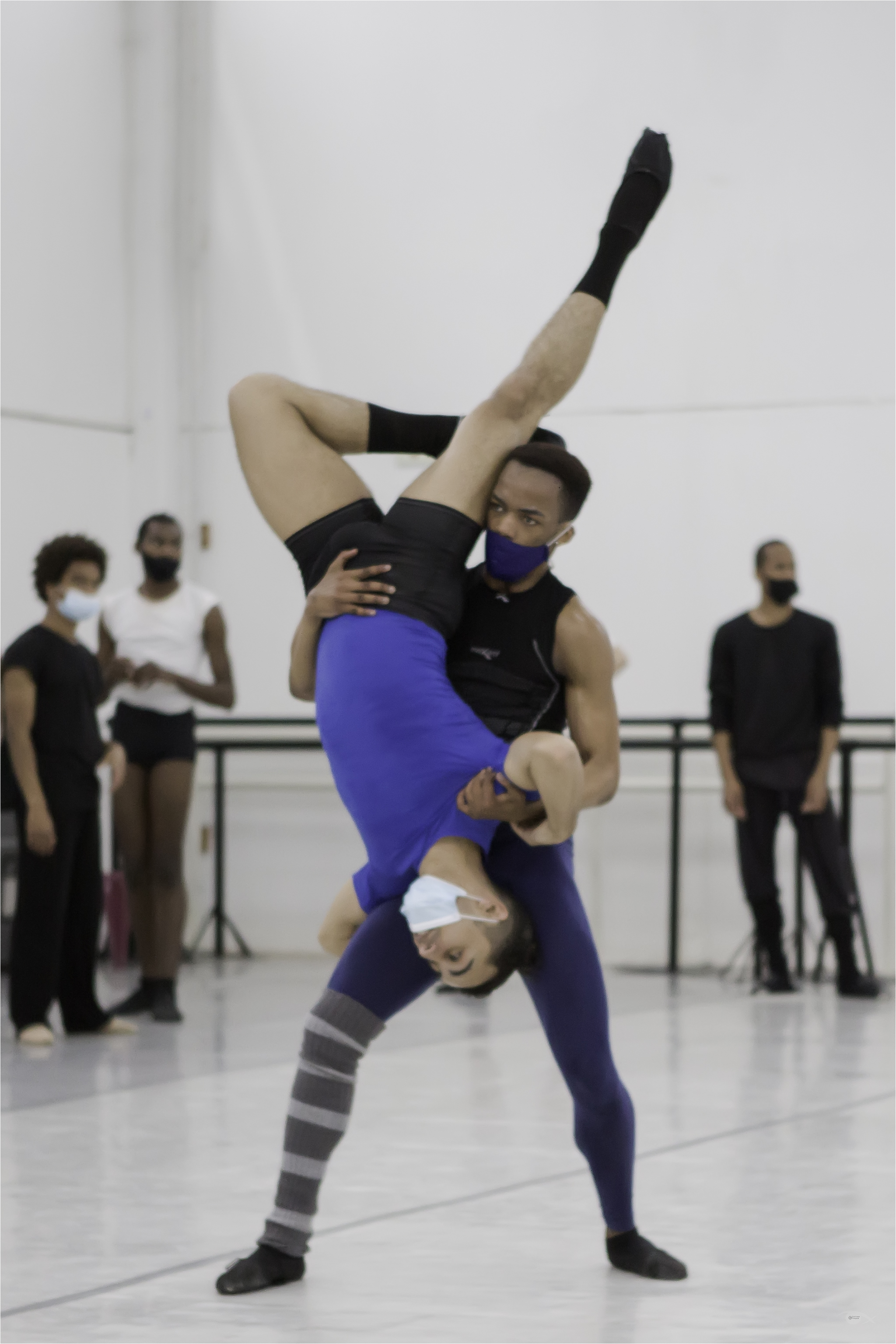
CTCB in rehearsal for Troy Game. Image: Danie Coetzee
The impetus for Troy Game came from music that North discovered while on a tour in Brazil. He brought a couple of vinyl LPs back to London and began creating a work based on that. Apart from his mixed artistic influences, he was also studying aikido, and had seen capoeira in Brazil. “He created the work in the breaks during other rehearsals,” Moss says. “He’d grab a dancer and say, ‘Can we quickly work on this…?’ And then one day it was all assembled.”
Apart from pulling together various strands of dance technique and style, he also wanted to use the piece to make fun of guys being guys. “It’s poking fun at jocks and studs doing their manly stuff,” says Moss. “While it’s not necessarily about anything, it’s really about several things. It’s also sort of ancient and ceremonial. And – for want of a better word – tribal, too. It has that deep ethnic honesty about it.”
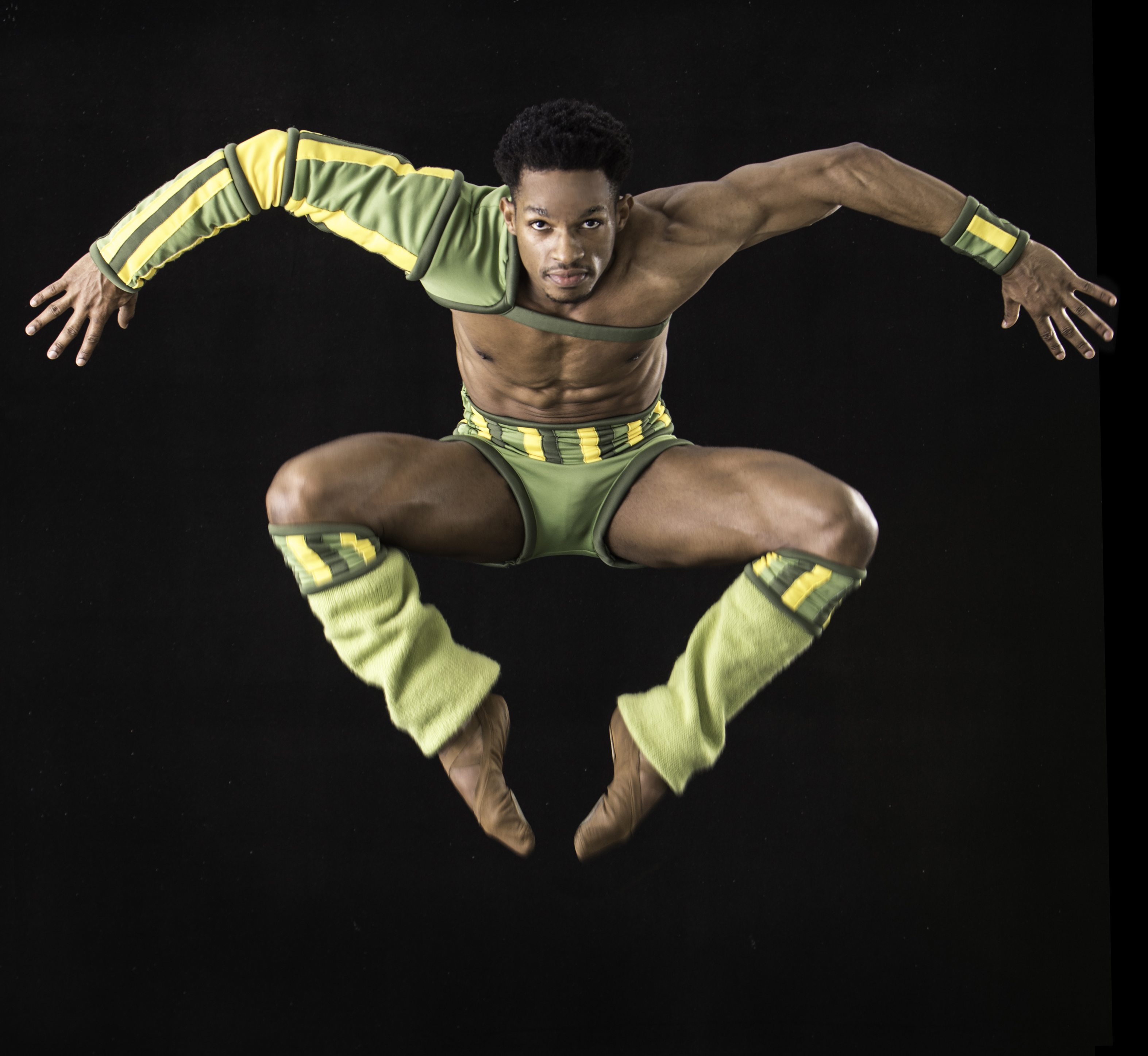
Thami Njoko in Troy Game. Image: Helena Fagan.
And then there’s also the challenge of jumping for 25 minutes. And the athleticism and discipline required to cope with that kind of exertion.
It may look like fun and games. And it is thrillingly upbeat and sexy, a joyous celebration of life. Yet its execution is brutal, demanding stamina, endurance, and – evidently – a high tolerance for pain.
“It’s hard to call out any one part as most challenging, but there’s one point – the climax at the very end – where the legs just don’t want to play anymore. It builds and builds and then there’s a section where they’re dropping down to their knees, and then leaning and coming forwards, all eight of them, and it’s so brutal that we used to call that the mother… Well, when you see it, you can imagine what kind of a mother it is… Because it really used to hurt like a mother…”
After the rehearsal, I ask some of the men who’ve been dancing like their lives depend on it to talk me through what it feels like.
“Oh, no, no, no, no, no… I just don’t even think about it,” says Cape Town-born and raised Elvis Nonjeke, who, despite registering the agony, can’t stop smiling. “From the ‘mother’ onwards you’re just living on hopes and dreams – hoping that your legs will bring you back up when you go down. But if I think about an ache, that’s where my focus will go, and I’ll start messing up because the pain will take over.”
“My legs start to get fatigued quite early in the piece,” says Quinton Jacobs, a former gymnast who hails from Swakopmund. “From there on it’s a mental battle to not think about the pain. By the time my last entrance happens, my legs are essentially dead; they’re absolutely shot. But you have to push through. I’m Afrikaans, so I keep telling myself, ‘Hou, bene! Hou!’ [Stay, legs! Stay!]”
“I think the perception is that when you go to the ballet, you’re going to see a bunch of women on stage running on their toes,” says Jordan Roelfze, who has been with the company for six years. “Troy Game is great because it demonstrates the kind of strength demanded from dancers. And it showcases what the men have to contribute. That we are of value in ballet.”
As much as male dancers can have considerable physical strength, Roelfze says it’s “a mental game” getting through a ballet like this. “You can’t worry about what’s aching and what’s uncomfortable. There’s an audience watching and they haven’t paid to see you in pain. They’ve paid to see you deliver. That’s the professional side of being a dancer.”
Moss says he knows all too well the heavy burden the piece places on the dancers. “It pushes them, it hurts them, and I know that in order to get the piece out, I have to push them to the point where it’s almost inhuman. A way of making that easier is to make them giggle every so often, to have a bit of a laugh, and not be obsessed. Because it is very easy to be obsessed with hurting knees and sore ankles.”
“Dance leaves you nothing – no manuscript, no photographs. But what it does give you is one intense, fleeting moment in which you are truly alive.”
Ultimately, though, Moss believes there is something innately joyful about being able to dance to this level that somehow makes the pain disappear. “There’s an enormous sense of satisfaction if you can get through a run of what is quite honestly a bitch of a piece. And if the dancers feel good about what they’re doing, it’s amazing how all the physical niggles dissipate.”
Moss says he witnesses human bodies being put through hell during almost every rehearsal – and in every performance. “During the run-through, I heard one of the boys slap his back hard on the floor. He went off in pain but then had a broad smile on his face for the rest of the run. Afterwards, I asked if he was okay, and he said, ‘It’s just so fantastic to be dancing’.”
Moss believes this kind of resilience to the pain is built up from the joy that dancing gives the dancers in return for their hard labour – their sweat, tears, and sometimes blood. He explains the level of pain-flattening exhilaration in terms of something that the great American choreographer, Merce Cunningham, once said. “He said that dance leaves you nothing – no manuscript, no photographs. But what it does give you is one intense, fleeting moment in which you are truly alive. I think there’s something so beautiful and poetic and honest about that. That’s how I feel when I jump around in a studio. It’s a fleeting sensation. You may have it for a tenth of a second when you move a certain way. But – oh, my god – it feels otherworldly. So for these dancers, coming back to the studio after the long hiatus imposed by the pandemic, is like a rebirth. Which sounds really naff. But this is what we do.” DM/ML
Cape Town City Ballet this month pays tribute to distinguished male choreographers with a programme of three distinctive 20th-century dance pieces. Alongside Robert North’s Troy Game, there’s George Balanchine’s Concerto Barocco danced to JS Bach’s “Concerto for Two Violins”, and Jiří Kylián’s Falling Angels, which was first presented in 1989 by the Nederlands Dans Theater. Alchemy – Three Dances is showing at the Artscape Opera House from 6 to 13 November.
[hearken id=”daily-maverick/8832″]

















 Become an Insider
Become an Insider
Comments - Please login in order to comment.